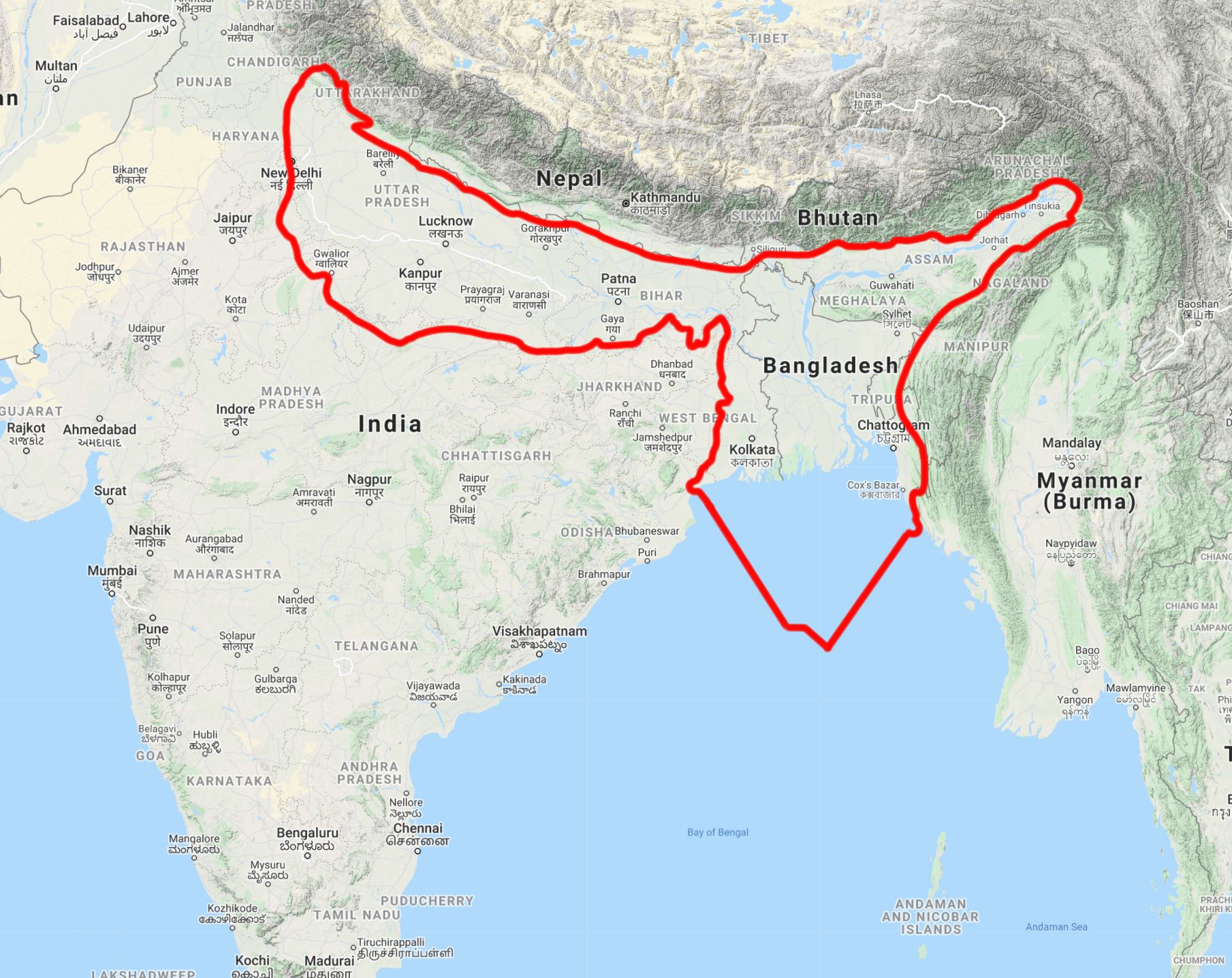Gharial: a pescatarian crocodile species as old as the dinosaurs
One Earth's “Species of the Week” series highlights the flagship species of each of the 844 unique ecoregions contained within Earth’s bioregions.
In the muddy rivers of Northern India and Nepal, a long, thin snout containing over 110 needle-like interlocking teeth swims below the surface. It belongs to the gharial, the longest of all living crocodilians and they have been patrolling these waters since the Cretaceous period over 140 million years ago. Yet, unlike most crocodile species, the gharial doesn’t use these teeth for mammals. A mostly pescatarian diet makes these crocs essential population control for the underwater world below.

Gharials are the flagship species of the Upper Gangetic Plains Moist Deciduous Forests ecoregion, located in the bioregion of North Indian Tropical Forests & Sundarbans (IM6).
Larger than the Nile and American crocodiles, a typical gharial can grow to 15 feet (4.6 m) in length and weigh up to 2,000 pounds (907 kg). They are the most aquatic of all crocodile species, webbed feet and a long, flattened tail gives them great swimming power. Their distinct thin snout cuts through the water with little resistance and the razor-sharp teeth that zigzag together like a zipper trap fish in their mouth.
This underwater agility comes at a price, relatively weak arms make it so they cannot lift their own body weight or sprint on land. However, this allows the gharial to coexist alongside the mugger crocodile. Whereas the mugger crocodile uses jaw strength to capture and keep mammalian populations balanced on land, the gharial uses speed to keep fish, crustacean, and frog numbers in check below the water.
Another recognizable feature of the gharial is the bulb at the end of the males’ snouts. It resembles an Indian clay pot called the ghara, which gives this species its name. Lacking bones and cartilage, it has chambers that act as a resonator. Males make popping noises to communicate as far as 500 meters away. Their sound is unique to each individual and they make a buzzing noise to attract females.

Females lay the largest eggs of all crocodilians, about the size of a baseball. An average of 40 eggs per clutch, they bury their eggs in the sand of the riverbanks. When they hatch, they call their mother and she digs them out, pointing them towards the water. Then she and a male will take care of the young until monsoon season. These males aren’t necessarily the father, but often young males not yet of breeding age who protect other males’ babies.
In Hindi, gharials are regarded as the vessel of the river deity Gaṅgā with mystical and healing powers. This fascinating species once thrived in all the major river systems of the northern Indian subcontinent. Now, they only live in 2% of their historical range. Currently, there are between 500-700 breeding adults. It is a slower recovery than conservationists would like, but an improvement from only 200 breeding adults left in 1970. Awareness and breeding efforts by the Gharial Ecology Project have helped save this species.
Interested in learning more about the bioregions of Indomayala? Use One Earth's interactive navigator to explore Earth's bioregions.
Launch Bioregion Navigator_female_head%20image%20credit%20Creative%20Commons%2C%20Charles%20J%20Sharp.jpeg?auto=compress%2Cformat&w=1440)


